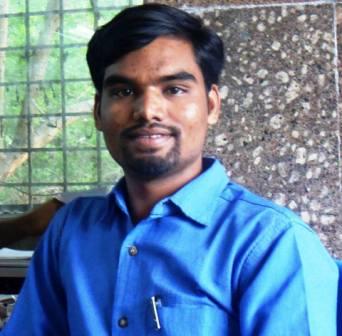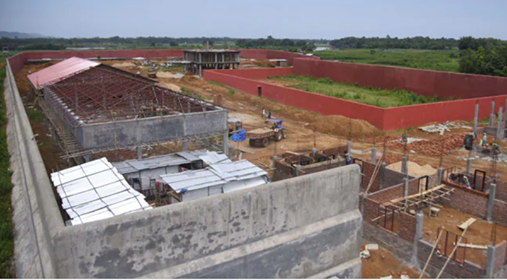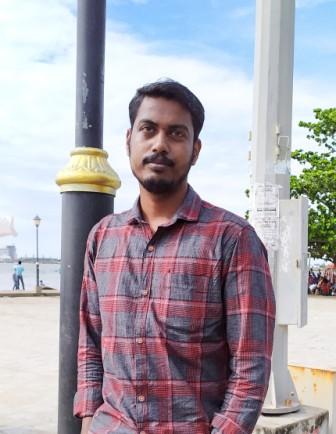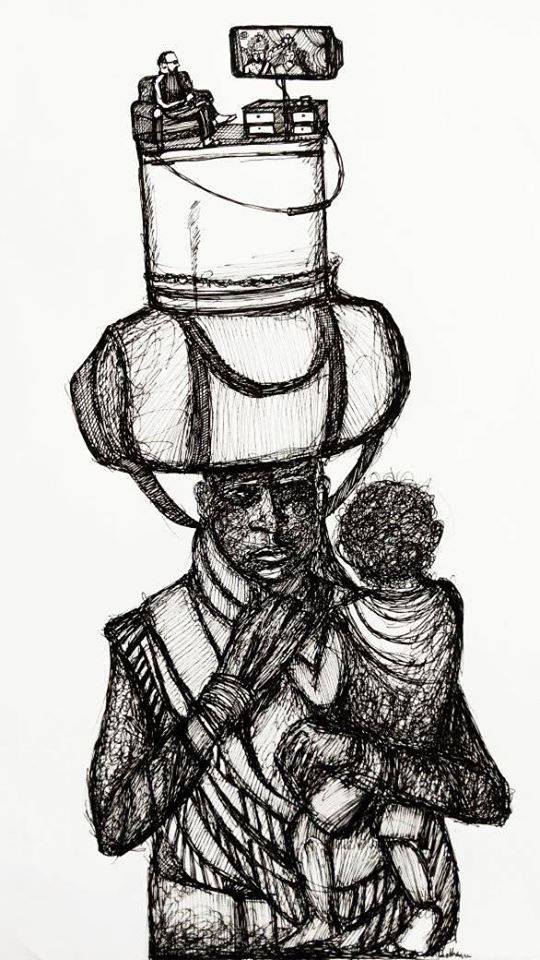Nitin Dhaktode
 It is to rvieting to witness the ‘Akhil Bhartiya Brahman Mahasangh (ABBM) and Udaysinh Peshwa, a descendant of the Peshwas, ask the Pune police to deny permission for the Shaniwar Wada (‘Elgar Parishad’)event. Despite the fact that permission was granted by the Pune Municipal Corporation and Police Department, the Brahmanical organisations submitted their application to Mrs. Mukta Tilak, Mayor of the Pune Municipal Corporation (BJP) and Police Commissioner, Pune. Mrs. Mukta Tilak is known for her anti-reservation views and belongs to the family of Bal Gangadhar Tilak who was a strong opponent of Mahatma Phule and Dr. Ambedkar’s anti-caste ideology.
It is to rvieting to witness the ‘Akhil Bhartiya Brahman Mahasangh (ABBM) and Udaysinh Peshwa, a descendant of the Peshwas, ask the Pune police to deny permission for the Shaniwar Wada (‘Elgar Parishad’)event. Despite the fact that permission was granted by the Pune Municipal Corporation and Police Department, the Brahmanical organisations submitted their application to Mrs. Mukta Tilak, Mayor of the Pune Municipal Corporation (BJP) and Police Commissioner, Pune. Mrs. Mukta Tilak is known for her anti-reservation views and belongs to the family of Bal Gangadhar Tilak who was a strong opponent of Mahatma Phule and Dr. Ambedkar’s anti-caste ideology.
Brahmanical groups have expressed their opposition to ‘Bhima Koregaon Shaurya Din Prerna Abhiyan’ (Campaign for the Celebration of Bhima Koregaon Victory) starting with the ‘Elgar Parishad’ on 31st December 2017 at Shaniwar Wada and the paying of tribute to Vijay Stambh (Victory Pillar) at Bhima Koregaon 30Km away from the Shaniwar Wada on 1st January 2018. Shaniwar Wada, the Peshwa’s Mahal (House), is the place where the programme is being organised. The slogan of the organisers is: “Fight Against the Modern Peshwai”! The Peshwai is known for its brutality towards the formerly untouchable and Shudra communities.
Sanjay Leela Bhansali showed in “Bajirao Mastani”, a Hindi film, a romanticised version of the kingdom. It was limited to imaginary entertainment where the important parts of the regime’s brutal practices were not shown. Peshwa regime was the first step towards the slavery of the Bahujan. Chatrapati Shivaji Maharaj (1630-1680) a well-known Bahujan King born in a Maratha clan began building his kingdom from Pune. To went into the hands of Brahmins known as Peshwas (Bhaskaran, 2016). It was very clear that the Brahmins in Maharashtra unhappy to accept Chatrapati Shivaji as the king and therefore they refused to perform the rituals of his Rajyabhishek (coronation as King) at Raigad. The argument put forth by the Brahmins was, how could a Shudra be a King? Since Shivaji was born in the Maratha caste, which is known as a caste of cultivators, Brahmins argued that they cannot be Kings. Strategically, Peshwas took the kingdom and imposed the worst ever rule in Pune Saltanat against which the Mahar (also known as new Buddhists today) soldiers fought for Britishers on 1st January 1818 on the banks of the Bhima River in Bhima Koregaon (BK henceforth) village in Pune district. It was not just a war for the Mahars but an opportunity to take revenge against the brutal untouchability practiced by the regime. It was an opportunity for the Mahar soldiers to destroy the Peshwai.
The bravery of the Mahars in Maharashtra and India is well known and well recognised by the Ambedkarites. Captain Francis Staunton, of the British East India company, asked Mahar soldiers from Bombay Native Infantry to be ready for a fight against the Peshwa. Mr. Sadnath, soldier and leader of the Mahar community, visited Bajirao Peshwa and informed him that the ‘Britishers have asked us to fight against you, but, if you give us dignity and respect along with land for the Mahars, we will not fight for the Britishers’. But the arrogant Bajirao Peshwa humiliated Sadnath and sent him out. Sadnath along with his Mahar soldiers were already fed up with the Peshwa’s brutality, and got angry with his response and decided to fight. Peshwa had 25000 soldiers and 3000 cavalry. There were only 500 Mahars with swords who fought the battle for 12 hours and won.
When I visited the Vijaysthambh in BK, I had a chat with an old farmer nearby. I asked him, did he hear any stories about the battle? The old man said that his grandfather used to tell him that the “Mahar Soldiers chopped heads of Peshwas and threw them in the Bhima river. The river was full of blood and dead bodies. It happened when the second Bajirao Peshwa was had reached the peak of his brutal practices against the Shudra community in the Pune kingdom”. Dr. Ambedkar (1945) argues, Peshwas imposed vicious restrictions on the untouchables, treated them inhumanely. The confrontation against the Peshwa came out through this battle with which the Peshwai vanished from Pune. It is for this reason, Dr. Ambedkar visited the BK’s Vijaysthambh on 1st January 1927, for the first time, to pay tribute to brave soldiers and then he continued the visits, every year.
Visiting Bhima Koregaon, an Experience
It was early morning on a Sunday– we, a group of research scholars and masters’ students began our journey from Tata Institute of Social Sciences, Mumbai on 1st January 2017 towards Bhima Koregaon. As soon as we reached the Vashi toll naka, New Mumbai, we could see many buses and vehicles with blue flags and banners of different groups, organisations and political parties going towards BK. I was aware of the battle of BK and people’s visits to pay tribute to Mahar Soldiers but had for the first time seen these many people. I thought it might be due to Sunday that many people were going to BK. The Mumbai – Pune highway was full of traffic since early in the morning. As we reached near Pune, the traffic was getting heavier. We crossed Pune and move towards BK. Again, the heavy traffic was two km long before BK’s Vijyasthambh. We got down from the bus and started walking towards Vijaysthambh. We neared the Vijaysthambh around 1:00 pm. We could see there were tents put up to rest and many old people were sitting. They must have come the previous day and stayed there for the night. It looked like there was a cultural programme in the night. There were proper planning and arrangements by the organisers and local authorities.
It was difficult to move forward in the crowd. Approximately more than 10 lakh people must have turned up to visit Vijaysthambh. The volunteers of Samta Sainik Dal (SSD) (established by Dr. Ambedkar) and other organisations were doing their best to make the process smooth. However, the place became small in front of such a huge gathering. The best part of the crowd was everyone was supportive and taking care of each other’s safety and security. As I went near the Vijaystambh, there was a feeling of happiness, the happiness of victory over brutal Peshwa, the joy of belongingness, feeling of bravery at that historical place. With a lot of pride, I paid tribute to the Vijaysthambh and said many thanks to those 500 Mahar soldiers.

Babasaheb Ambedkar at Vijaystambh
While walking out I could see the shops selling photos of Mahatma Phule, Savitrimai Phule, Gautam Buddha, Chhatrapati Shahu Maharaj, Chatrapati Shivaji Maharaj, Mata Ramai, Dr. Ambedkar, Annabhau Sathe etc, the annual calendars and many more things that indicate the Phule, Shahu & Ambedkarite ideology. The songs being played loudly were all about the above social reformers. When we came on to the main road of the Pune-Nagar Highway we saw that many cultural groups were presenting skits, songs for the awareness of Ambedkarite ideology talking about liberty, equality, fraternity and justice (Social, Political and Economic).
When I see the crowd at Chaityabhumi Dadar every year on 6th December and now at BK, I wonder if the community can gather in such huge numbers, then why is it not converting this strength in the ballot box/EVM? Why are true Ambedkarite representatives not getting into state assemblies? I started asking the people around this question. I enquired with one of the woman sitting beside the road. She was from Mumbai, was brought in by a member of the Bombay Municipal Corporation. Then my eyes noticed the bus from Pune with Congress party flag. I enquired with the group of people from that bus. They also replied in a similar manner. Initially, I thought they might be members belonging to the Dalit community and had, therefore, arranged the bus and came to BK. But later I understood that many buses and vehicles were arranged by every political parties from across the state, keeping in mind the upcoming Municipal and Gram Panchayat elections. Then I could understand the rationale behind the number of the vehicles from Mumbai in BK.
However, was the crowd there just because political parties bear the travel expenses of the people? Certainly not. But due to such sponsorship, an unexpected crowd turned up and it was difficult for the organisers to manage it. Nevertheless, every year, the Ambedkarite crowd at Chaityabhumi is not sponsored by such political parties, but still they come in huge numbers. There are people who will gather in lakhs in the name of Ambedkar. Whether they are true Ambedkarites or not is the secondary part. Somewhere, we the educated people and the politicians who joined the hands of various other parties are mainly responsible. Why educated people, maybe question. Certainly, we are responsible, because we have not reached those who believe in Ambedkar but cast vote for Brahminical parties.
Contemporary Politics
The polarisation of Ambedkarites was begun by the BJP to take advantage of 125th Birth Anniversary of Dr. Ambedkar. They pretended to hold a grand celebration of the birth anniversary in 2015-2016. To celebrate the birth anniversary, money was taken from the Ministry of Social Justice and Empowerment, which was supposed to go towards students’ scholarships, the building of hostels and empowerment of the Scheduled Castes. This display certainly gave the benefit to the BJP in the Uttar Pradesh state assembly elections. Keeping in view the upcoming elections of Municipal Corporations in various parts of Maharashtra every party wanted to attract the Dalit voters. Hence, they arranged buses and vehicles to visit BK in January 2017. The good part of this visit was many people became aware of BK and the legacy of the Mahars. This year certainly no party will arrange such buses and vehicles but the followers of Ambedkar will turn in similar number due to the mobilisation of the various organisations against the BJP’s anti-constitution agenda and the attacks on the Dalit and Muslims. BK is a symbol of the confrontation against the hegemony that exploited the marginalised. In the present regime, the kinds of attacks on Dalits that happened made followers of Ambedkar come together to fight against this modern Peshwai.
The politics over Elgar Parishad in Shaniwar Wada is one of the important points of this discussion. The kind of speakers invited for the conference gives uncomfortable vibrations in the Brahmanical organisations, including BJP. Since Rohith Vemula’s institutional murder the Ambedkarite Students’ struggles across the nation have given a spark for the movement. If we see the contemporary politics played around the Yalgaar Parishad, we can see that Ambedkarites are falling into the trap of the Left radicals’ politics. They are trying to appropriate Ambedkar as radical and bringing Marx and Ambedkar on one platform. There should not be a problem in bringing them together. However, it is certainly important to note the ideological differences. Both political philosophers had different visions of society and the paths to achieve the ideal society.
When we see the list of speakers for the Elgar Parishad at Shaniwar Wada, it indicates that mostly left oriented leaders are there, except for a few from Ambedkarite movements. Jignesh Mevani is one of the speakers who has risen up as a Dalit face after the attack on Dalits in Una and Gujarat state assembly elections, but when we see his stand and understanding about Ambedkarism it surely indicates that he needs to do in-depth homework about Ambedkar and understand the Ambedkarite ideology before he criticises Ambedkarites. On one side, he says he is a follower of Ambedkar and on the other, he promotes the Left ideology along with attacking Ambedkarites who carry the clarity of Ambedkarism.
However, the BJP is in a big worry over the contemporary Ambedkarite mobilisation, especially in the name of the BK victory. BK’s victory indicates the bravery of the Mahars which gives confidence to the Mahars, including other Ambedkarites, to fight against exploitation. The kind of preparation by organisers pushed BJP government to think twice about the demands of Brahminical organisations for canceling the permission, therefore they imposed many restrictions on the programmes. The followers of Ambedkar are going to gather in a huge number.
Conclusion
If we see the contribution of the Mahars to the social movement it is well known that they have played a significant role all through, from Bhima Koregaon to Justice for Rohith Vemula struggles. Wherever there is an issue involving reservation, atrocities on any SC, ST, Mahars have always been in the forefront, to fight on the road. But after all that, other castes criticise Mahars with various arguments e.g. Mahars dominate the discourse, lead movements, taken benefit of reservation etc. I think Mahars have understood very well the message of Dr. Ambedkar: Educate, Agitate and Organise. Mahars are getting well educated, contributing to society through agitation and making sure Bahujan community are organised to fight against exploitation. The followers of Buddhism are mostly from the Mahar caste. It is great to see the OBCs converting to Buddhism – this took almost 60 years. However, still, there are a few castes among SCs who are yet to understand Ambedkar, and only criticise the Mahars.
It is important to overcome the criticism within the community in the BJP regime and work together against the Brahmanical forces. Time needs Bahujan politics with Ambedkarite ideology. Bahujan politics should be led by members of well-educated, marginalised caste and not by leaders from dominant castes. The movement needs organic leadership. Many members of dominant castes pretend to show their commitment but the movement needs committed organic leadership that has come from the grassroots having an in-depth understanding of realities. However, this does not mean that Bahujan politics should not have any space for upper castes. Yes, they should be allowed but as members/workers/volunteers and not leaders. As you present this clarity before them more than half of the aspirants will run away and would join Left parties and groups.
But it is important to work with those committed members from dominant castes because without working with these them it impossible to annihilate caste from society. Working only with victims may not bring the final solution. Thus, the need to work with members born in oppressor group closely. In addition, there is a need to take some precautions to save the movement. Thus, keep away the few characters from the movement e.g. who make attempts just to build their personal careers, self-proclaimed Ambedkarites whose work is only to brainwash the innocents and disturb the mobilisations, finally, self-claimed Mohalla leaders who come up with new parties and announce themselves as national leaders. Educated Ambedkarites across the fields should not allow such characters in Bahujan politics. A movement needs dedicated, altruistic members. Taking inspiration from BK, Mahars along with many other Bahujans, we will have to fight many more battles in the future; the only difference would be opposition might have multiple weapons but Bahujans will have only one, which is education/knowledge with full faith in the constitution.
~
References
* Ambedkar, B R. (1945). Annihilation of Caste”, IIIrd Edition. Bombay: The Bharat Bhushan Press.
* Ambedkar, B R. (1949) ‘Who were the Shudras?, Bombay: Thackers Press. Copy available at https://drambedkarwas.files.wordpress.com/2010/10/who-were-the-shudras.pdf
* Bhaskaran M. D. (2016), Challenging Destiny. Mumbai: The Write Place Publication. ISBN: 9788193266700.
~~~
Nitin Dhaktode is currently pursuing PhD in Development Studies at Tata Institute of Social Sciences, Mumbai.










